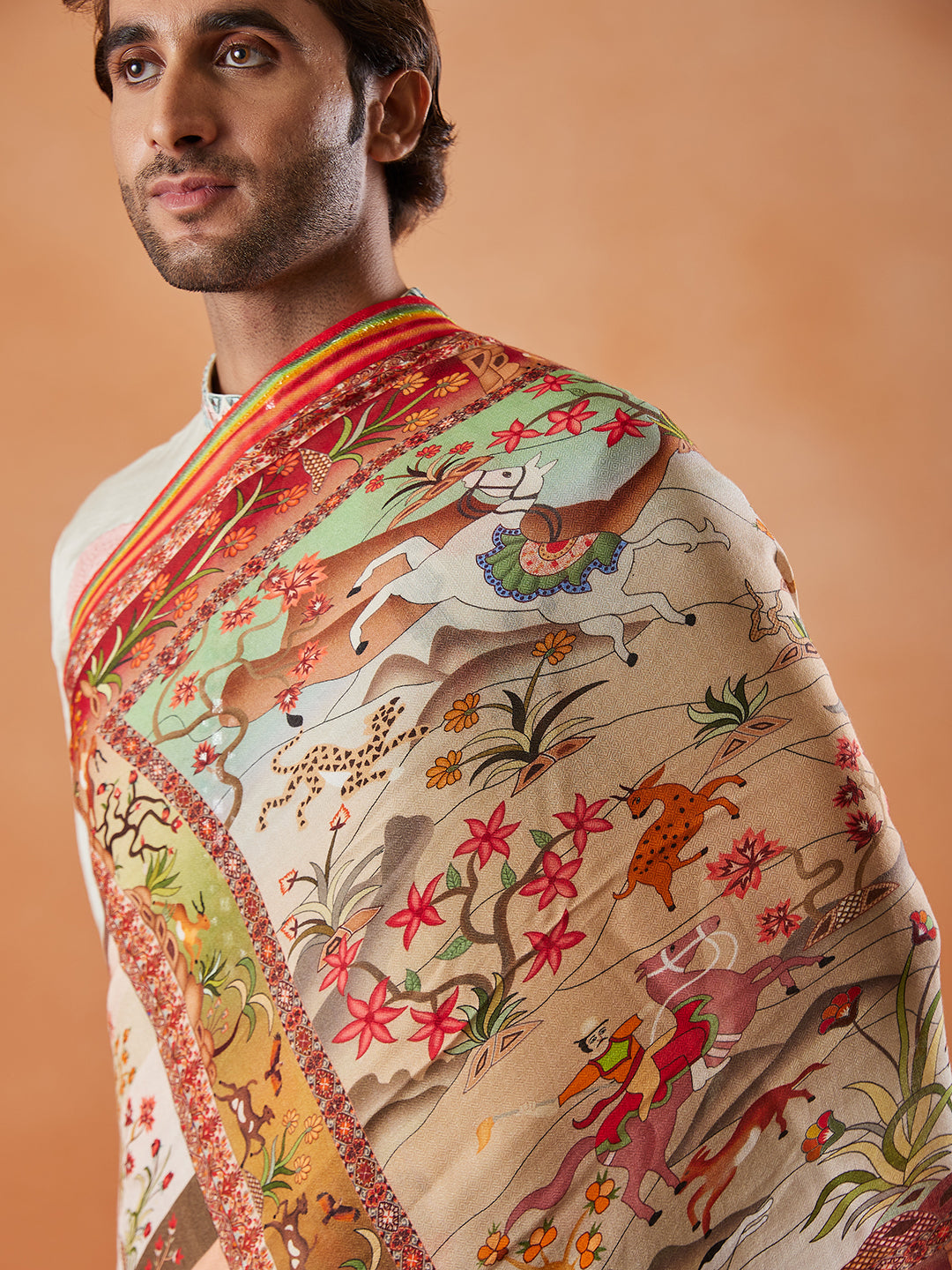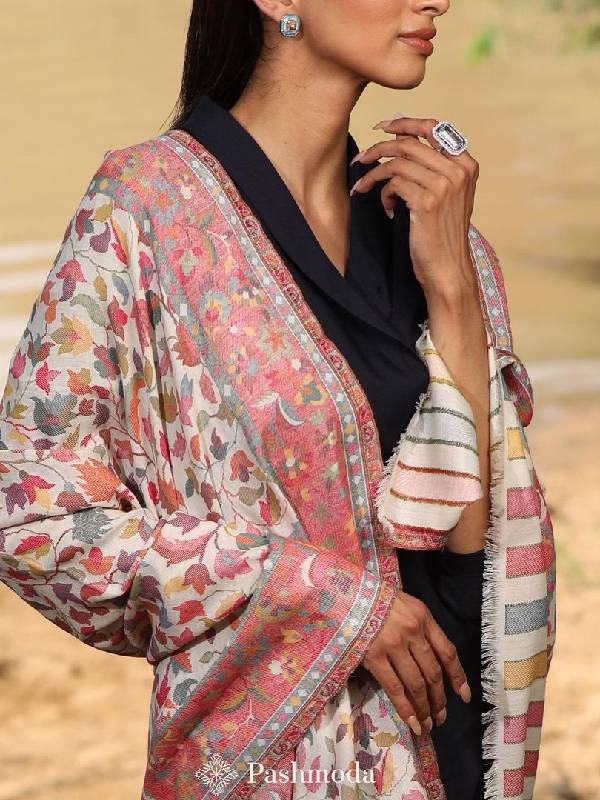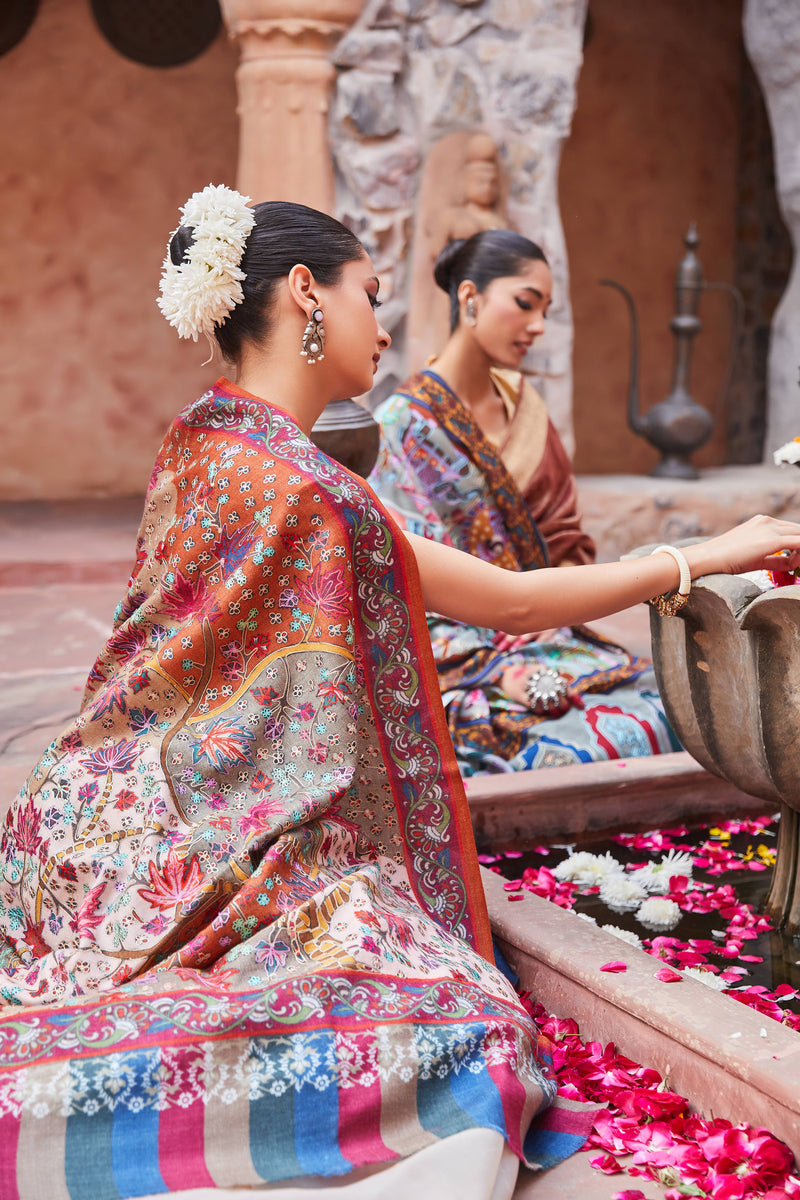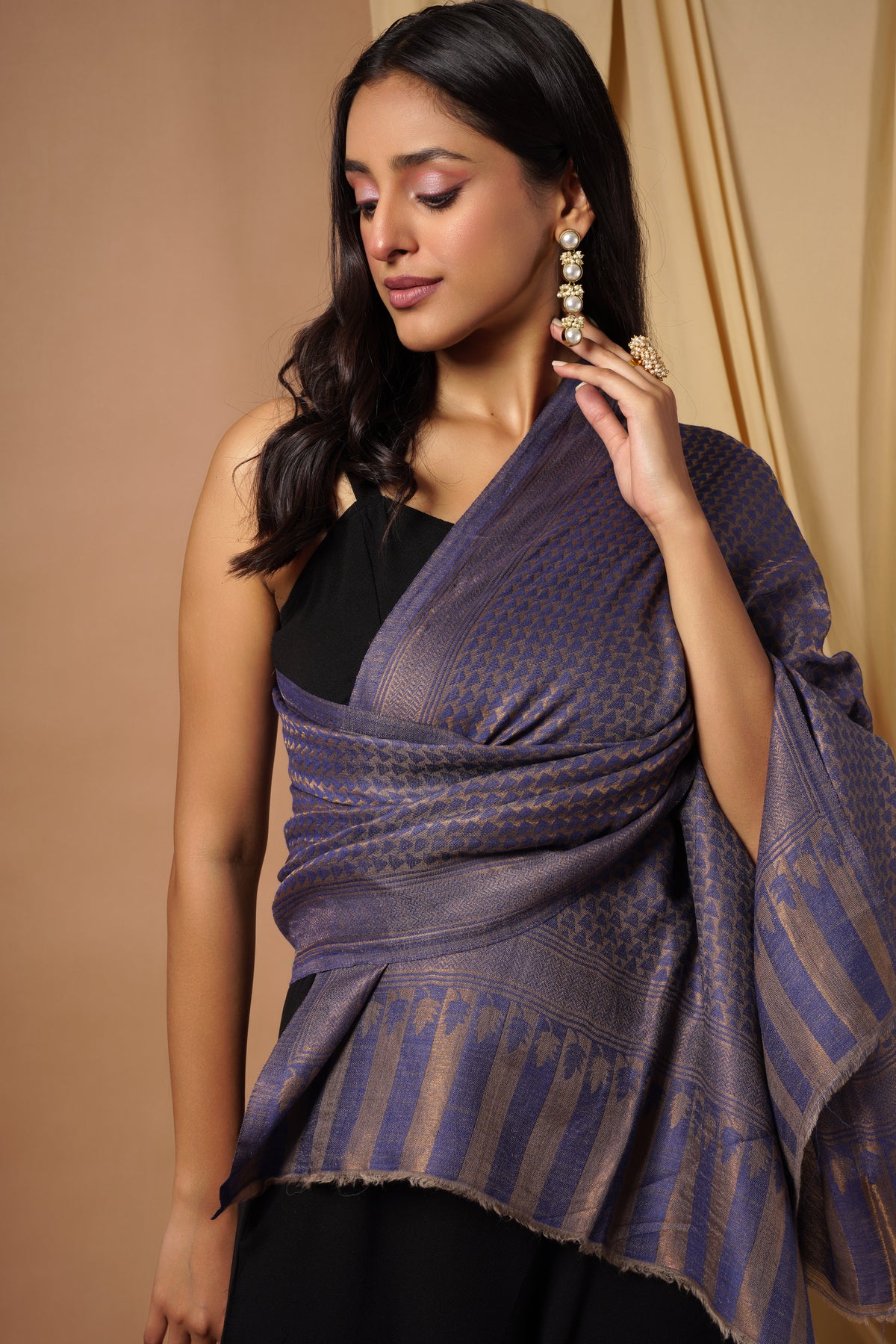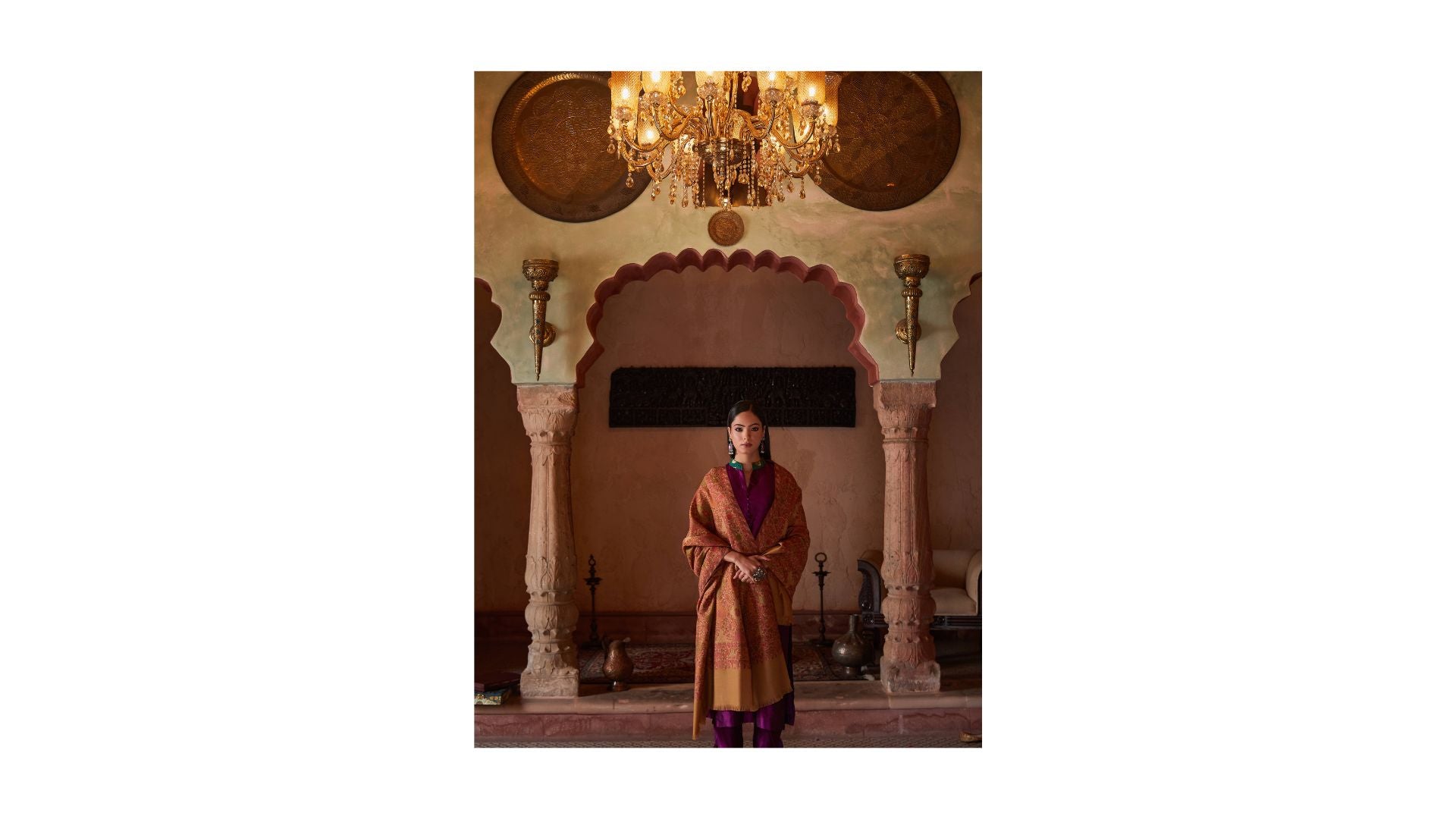
A Brief History of Pashmina Shawl Weaving in Kashmir
Kashmir, a heaven on earth, is the land where the Pashmina shawl, a charming piece of clothing, comes from. Because, in addition to being just a mere cloth, Pashmina is an embodiment of India’s culture and history as well as a reflection of our centuries-old artisan skills. It has been adored worldwide for the delicate handwork that covers it, as well as its soft texture and warmth. That is why Kashmiri art is trusted by the world. Let us now go deep into the rich past and cultural significance of Pashmina shawl weaving in Kashmir and go on a journey from its wool picking to finishing one of the most coveted pieces of luxury clothing India has given the world.
Origins of Pashmina Shawl Weaving in Kashmir
To know about the origin and heritage of shawls woven in Kashmir made from pashmina, we have to look way back in time. It was said to have been brought here by Mir Sayyid Ali Hamadani, a Sufi Muslim saint who came to preach Islam in Central Asia and Kashmir. He introduced this fine-quality wool weaving along with his disciples, which he saw in Ladakh, where Changthangi goats’ wool is woven by people from that region into fabric. He was a promoter of arts and crafts in the region of Kashmir and became the guiding spirit for the artisans of the land. He motivated them to explore new weaving techniques and gave an economic push to the artisans and weavers of Kashmir. After the artisans started weaving high-quality wool derived from Kashmiri goats, the shawls, which were of high quality and unmatched beauty, caught the eye of the Mughals. The Mughals were known for their taste in rich and luxury textiles, and they later became responsible for Pashmina becoming synonymous with luxury across the subcontinent.
Historical Evolution of Pashmina Craftsmanship
Over the centuries, Pashmina shawls and their craftsmanship have seen immense evolution and significant influences from all across the globe. From Persian influence to the colonisation of the British, Pashmina shawls saw many alterations in the design and technique throughout. However, the biggest influence was the Mughal era, as Pashmina shawls reached their peak of intricacy and the finest weaving techniques were promoted by the Mughals. These techniques have stood the test of time and are still revered and used today.
Significance of Pashmina in Kashmiri Culture
Pashmina has attained the status of a fine lifestyle globally. But what about the land where it comes from? In Kashmir, Pashmina is not just a piece of luxury; it is a source of their economic significance, a source of so many of their livelihoods. It is also a legacy that has been passed down from one generation to the next. Kashmir has seen a lot of turmoil, a lot of violence, and political unrest for ages. But the art and Pashmina Isarehat kept the people going through those tough times. So Pashmina is also a testament to the soul of Kashmir—the resilience of the people and their dedication to their art despite social unrest. They hold special placonin celebratory occasions like weddings, where they are considered prized possessions for a bride. They are a symbol of elegance and grace and a statue of the Kashmiri spirit.
Traditional Techniques in Pashmina Shawl Weaving
The creation of Pashmina shawls is a labor-intensive, time-consuming process. It goes through many painstaking procedures, from delicately combing the Kashmiri goat’s underfur, which is the wool used to create Pashmina shawls, which is separated from the coarser outer wool by hand, to the long spinning and weaving time, and finally, the hand embroidery that is the cherry on the cake. Traditional techniques include hand spinning on charkha and weaving on a handloom instead of machines. These techniques are still used in order to keep the uniqueness of every shawl intact and its quality alive.
Mastering the Art: Skilled Pashmina Artisans
The artisans who are responsible for making Pashmina shawls are nothing less than masters of their craft. They usually start early, where they learn the art from their parents or grandparents, who have been doing it for generations. They do everything with their hands to bring to life the intricacy and unique pattern that every shawl has, making them a masterpiece. And their versatility is unquestionable—to evolve with the times and keep the art of Pashmina weaving alive—over the years they have forayed into men’s shawls as well as stoles, which find more buyers in modern times.
Pashmina Shawls in Royal and Cultural Contexts
Pashmina, as discussed, has been the sign of royalty for ages now. They were historically a staple in the wardrobes of royalty and the elite class of society, as they were symbols of wealth and sophisticated taste. They can still be seen in museums and have been documented in books, travel logs, and paintings from Mughal and colonial times, which stands as a testament to their royal lineage and rich cultural context.
Pashmina Weaving Communities in Kashmir
As custodians of this ancient craft, many communities have kept the art of weaving Pashmina alive. Since the majority of the Pashmina wool is obtained from the Changthang region of Ladakh (a high-altitude cold desert at heights between 4000 and 4500 mts), this area is inhabited by nomads called Changpas. They have now formed their own marketing cooperative society with the government’s help, through which they sell the pashmina wool to weavers in Srinagar, who then work on it to make pashmina shawls. Many such communities exist in Kashmir, which have generatio-old legacies and have preserved this heritage technique despite the socio-economic changes they have faced.
Challenges and Innovations in Pashmina Weaving
Of course, with the rising technical dependence in the clothing industry, the Pashmina industry has to face certain challenges. The biggest challenge is the rise in counterfeit, machine-made pashmina shawls. The second is the hindrance in production, sales and exports due to political unrest in the area. Third, in the rapidly growing fashion demand among younger generations, there is a threat to the value of such exquisite and expensive forms of clothing. However, the expansion of the product range and, side-by-side, the rise in sustainability awareness have also given this art form a chance to stand its ground and stay relevant.
Preserving the Legacy: Modern Pashmina Industry
The modern Pashmina industry can be described as an effective blend of tradition and innovation. Keeping the culture alive while giving it a twist of trend with time is always important for any legacy art form to sustain. The modern industry has received a GI (geographical indication) tag, which certifies its authenticity and gives the artisans due respect. The industry has also kept in mind the cost of the shawl, which reflects its quality and craftsmanship, which is a symbol of luxury and timeless elegance.
From the art form that took birth in Kashmir’s towns by a sufi saint to reaching the biggest fashion markets in the world, Pashmina has stood the test of time and is a sign of Kashmiri Pashmina’s unmatched beauty and craft. It continues to be a source of livelihood for countless artists in Kashmir and also reminds us of the cultural heritage of the land we come from. It is a fabric woven with countless stories of strength, learning, resilience, spirit, legacy, and tradition that is indelible.

